
Elmer Austin Benson was an American lawyer and politician from Minnesota. In 1935, Benson was appointed to the U.S. Senate following the death of Thomas Schall. He served as the 24th governor of Minnesota, defeating Republican Martin Nelson in a landslide in Minnesota's 1936 gubernatorial election. He lost the governorship two years later to Republican Harold Stassen in the 1938 gubernatorial election.
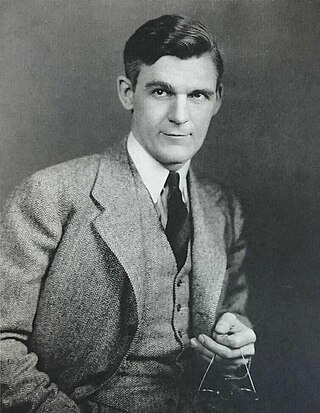
Joseph Hurst Ball was an American journalist, politician and businessman. Ball served as a Republican senator from Minnesota from 1940 to 1949. He was a conservative in domestic policy and a leading foe of labor unions. He helped draft the Taft-Hartley Act of 1947. Ball was best known for his internationalism and his support for a postwar world organization, that became the United Nations. However, after 1945, he was an opponent of the Marshall Plan.
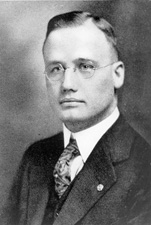
Arthur Emanuel Nelson was an American lawyer and politician who served briefly as a U.S. Senator from Minnesota during the end of 1942 and beginning of 1943
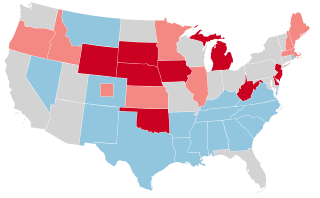
The 1942 United States Senate elections were held November 3, 1942, midway through Franklin D. Roosevelt's third term as president. The 32 seats of Class 2 were contested in regular elections, and two special elections were held to fill vacancies.

The 1940 United States Senate elections coincided with the election of Franklin D. Roosevelt to his third term as president. The 32 seats of Class 1 were contested in regular elections, and special elections were held to fill vacancies.

The 1936 United States Senate elections coincided with the reelection of President Franklin D. Roosevelt. The 32 seats of Class 2 were contested in regular elections, and special elections were held to fill vacancies. The Great Depression continued and voters backed progressive candidates favoring Roosevelt's New Deal in races across the country. The Democrats gained 5 net seats during the election, and in combination with Democratic and Farmer–Labor interim appointments and the defection of George W. Norris from the Republican Party to become independent, the Republicans were reduced to 16 seats. Democrats gained a further two seats due to mid-term vacancies. The Democrats' 77 seats and their 62-seat majority remain their largest in history.
The following table indicates the party of elected officials in the U.S. state of Minnesota:

A general election was held in the U.S. state of Minnesota on November 8, 2016. All seats in the Minnesota Senate and Minnesota House of Representatives were up for election as well as Minnesota's 10 presidential electors and Minnesota's eight seats in the United States House of Representatives. A primary election was held on August 9, 2016.
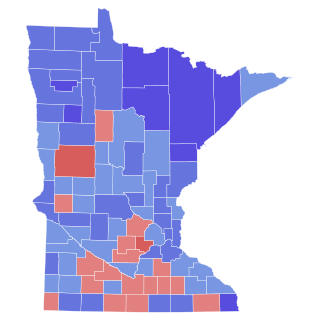
The 1948 United States Senate election in Minnesota took place on November 2, 1948. It was the first election held for Minnesota's Class 2 seat in the United States Senate since the Minnesota Democratic Party and the Farmer-Labor Party of Minnesota merged in 1944 to form the Minnesota Democratic-Farmer-Labor Party. Democratic Mayor of Minneapolis and future Vice President Hubert H. Humphrey defeated incumbent Republican Joseph H. Ball, who sought a third term in the Senate. This is the first time a Democrat won a Senate seat in Minnesota through popular vote election.

The 1942 United States Senate election in Minnesota took place on November 3, 1942. Incumbent Republican Joseph H. Ball, who had been temporarily appointed by Governor Harold Stassen in 1940 to fill the seat of the deceased Farmer–Labor U.S. Senator Ernest Lundeen, defeated Farmer–Labor former U.S. Senator and former Governor Elmer Benson, independent candidate Martin A. Nelson, and Democratic nominee Ed Murphy, to win election to the full six-year term beginning in January 1943. A special election held on the same date elected Republican nominee Arthur E. Nelson to serve the remainder of Lundeen's unexpired term.

The 1946 United States Senate election in Minnesota took place on November 5, 1946. It was the first election to either of Minnesota's seats in the United States Senate held since the Minnesota Democratic Party and the Farmer-Labor Party of Minnesota merged in 1944, to form the Minnesota Democratic-Farmer-Labor Party. Incumbent U.S. Senator Henrik Shipstead was defeated in the Republican primary by Governor Edward John Thye, who went on to defeat DFL challenger Theodore Jorgenson in the general election.

The 1918 United States Senate election in Minnesota took place on November 5, 1918. It was the first election for Minnesota's Class 2 seat in the United States Senate, and the second U.S. Senate election in Minnesota overall, held after the ratification of the Seventeenth Amendment to the United States Constitution, which established the popular election of United States Senators. Incumbent U.S. Senator Knute Nelson of the Republican Party of Minnesota easily defeated his challenger in the general election, Willis Greenleaf Calderwood of the National Party, to win a fourth term in the Senate.

The 1922 United States Senate election in Minnesota took place on November 7, 1922. Farmer–Labor challenger Henrik Shipstead defeated incumbent Republican U.S. Senator Frank B. Kellogg and Democratic challenger Anna Dickie Olesen.

The 1923 United States Senate special election in Minnesota took place on July 16, 1923. The election was held to fill, for the remainder of the unexpired term, the seat in the United States Senate left vacant by Republican U.S. Senator Knute Nelson, who died in office on April 28, 1923. State Senator Magnus Johnson of the Farmer–Labor Party of Minnesota defeated Governor J. A. O. Preus of the Republican Party of Minnesota, and State Senator James A. Carley of the Minnesota Democratic Party, which, together with Henrik Shipstead's victory in 1922, brought both of Minnesota's seats in the United States Senate into the hands of the Farmer–Labor Party for the first time in history.
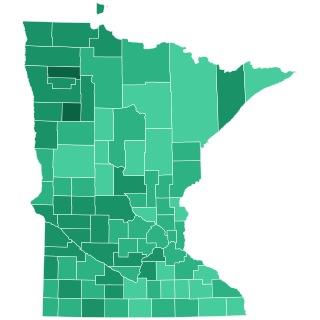
The 1928 United States Senate election in Minnesota took place on November 6, 1928. Incumbent Farmer–Labor U.S. Senator Henrik Shipstead defeated his Republican challenger, former St. Paul mayor Arthur E. Nelson, to win a second term.

The 1930 United States Senate election in Minnesota was held on Tuesday November 4, Incumbent Senator Thomas D. Schal defeated Einar Hoidale of the Minnesota Democratic Party and Forner United States Representative Ernest Lundeen of the Farmer–Labor Party of Minnesota to win a second term.

The 1936 United States Senate special election in Minnesota took place on November 3, 1936. The election was held to fill the vacancy in the seat formerly held by Thomas D. Schall for the final two months of Schall's unexpired term. Governor Floyd B. Olson had appointed Elmer Benson to fill the seat in 1935, but this appointment was temporary and subject to a special election held in the next general election year thereafter—1936. Benson opted to run for governor instead of running for election to continue for the remainder of the term. No special primaries were held for the special election, and No special primaries were held for the special election, among Minnesota's three major parties, only the Republican Party of Minnesota officially fielded a candidate—Guy V. Howard. Regardless of the absence of Farmer-Labor and Democratic nominees, Howard nevertheless faced a great degree of competition from independent candidates Nathaniel J. Holmberg, Andrew Olaf Devold, and John G. Alexander.

The 1936 United States Senate election in Minnesota took place on November 3, 1936. Incumbent Farmer–Laborite Elmer A. Benson, who had been temporarily appointed by Governor Floyd B. Olson in 1935 to fill the seat of the deceased Republican U.S. Senator Thomas D. Schall, opted to run for Governor rather than seek election to a full term or to fill the remainder of the unexpired term. Governor Olson won the Farmer–Labor primary for nomination to the full Senate term, but died of stomach cancer prior to the general election. In Olson's place, the Farmer–Labor Party ran U.S. Representative Ernest Lundeen, who went on to defeat former Governor Theodore Christianson of the Republican Party of Minnesota in the general election. A special election held on the same date elected Republican nominee Guy V. Howard to serve the remainder of Schall's unexpired term.

The 1940 United States Senate election in Minnesota took place on November 5, 1940. Incumbent U.S. Senator Henrik Shipstead defected to the Republican Party of Minnesota from the Farmer–Labor Party of Minnesota, and defeated former Governor Elmer Benson of the Farmer–Labor Party and John E. Regan of the Minnesota Democratic Party to win a fourth term.

Elections were held in Illinois on Tuesday, November 5, 1940.






















